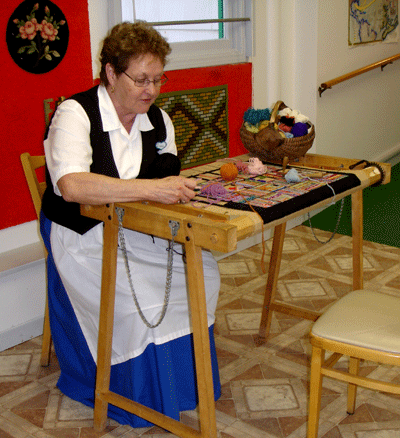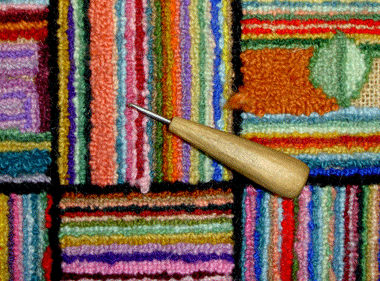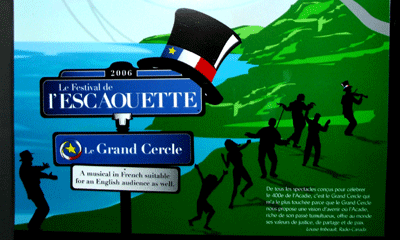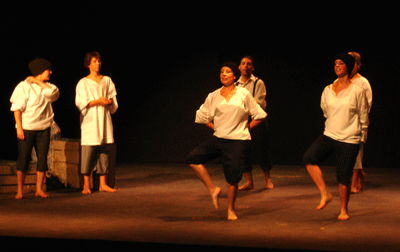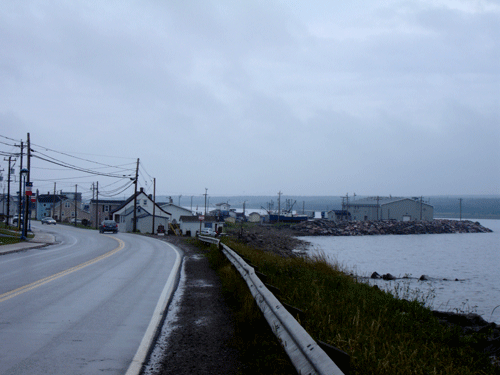Tales of a 21st Century Gypsy
July 28, 2006. L’Acadie
When I left Quebec, I thought I was leaving French Canada, but I wasn’t. Nova Scotia, New Brunswick, and Prince Edward Island are home to l’Acadie, the Acadian community that came to this country in the 18th century and is the origin of the name “Cajun” for the Louisiana French. I came across some Acadian music a few years ago, a group from PEI called Barachois, and my interest in their dancing led me to take a course in tap when I lived in New Jersey. But other than that, I didn’t know anything about them.
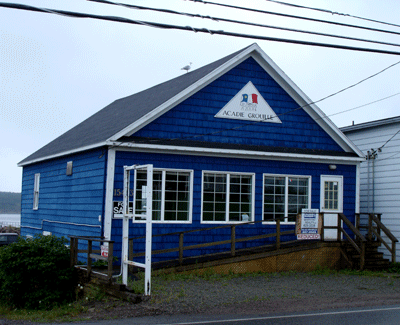
The Nova Scotia tourism offices were full of flyers about l’Acadie, but I hadn’t heard any French since I left Quebec. Then I arrived in Chéticamp, the last town before entering Cape Breton National Park, and found the flourishing of l’Acadie. Or at any rate, a lot of talk about it. When I pulled into town I stopped at the Coopératif de l’Artisanat Acadien, for which I’d seen lots of publicity. First, though, I parked my car at the Co-op supermarket, which proudly announced, in large bilingual signs, that this “this store has been community-owned since 1937,” and that its profits stay in the area instead of going elsewhere. Driving in, all the signs were in English, though at the garage where I stopped for propane folks were speaking a mix of both, jumping back and forth between the languages.
At the coopératif they were selling hooked rugs, which I don’t much like, at very high prices. I headed downstairs to their museum, thinking I’d be out of there in five minutes.
